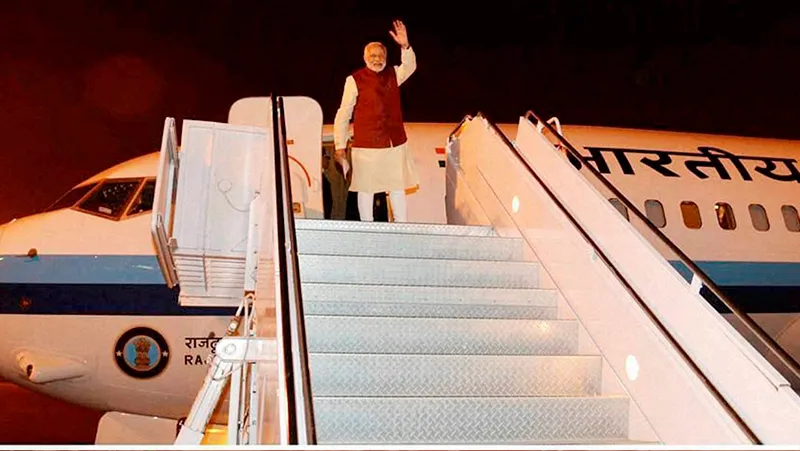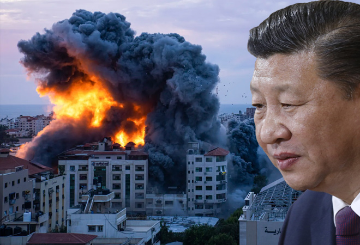In the past few weeks, the pace and intensity of interaction been India and Pakistan has been hectic, almost as if the Modi government is making up for lost time. There was the meeting of the national security advisers, assisted by foreign secretaries of the two countries, in Bangkok. Following this, minister for external affairs Sushma Swaraj made a successful visit to Islamabad where she attended the Heart of Asia conference that focused on Afghanistan and, more important, broke the ice with the Pakistani political leadership.
Early in the New Year, the foreign secretaries are expected to resume the Composite Dialogue (now tweaked and called the Comprehensive Dialogue). As a confidence-building precursor, there was Prime Minister Narendra Modi’s drop-in visit to Lahore to meet Pakistani Prime Minister Nawaz Sharif and attend a wedding in the Sharif family. It would appear that Mr Modi, after 12-18 months of a see-saw Pakistan policy, has returned to the path of Prime Ministers Atal Bihari Vajpayee and Manmohan Singh and that there is a certain consistency and continuity to India’s approach to Pakistan.
While such an assessment would be broadly correct, it would not be exact. There are similarities and differences in the Modi government’s attitude towards Pakistan. Again, there are several reasons for this. There are differences in personalities and in the political mandate of the current government. There are also issues related to the changing regional and security environment. Indeed, the situation in Afghanistan and, more so, within Pakistan is vastly different from what it was in May 2014, when the Modi government took office.
It is important that these factors be kept in mind, as a guide to understanding what is possible and what is difficult to expect in the months ahead, and also as a caution for the Modi government itself. In sum, there are three factors that distinguish the Modi government’s Pakistan predicament as well as Pakistan options from those of the Vajpayee and Singh governments.
First, the nature of power equations inside Pakistan has changed. Mr Vajpayee and after him Dr Singh dealt with the regime of General (and later President) Pervez Musharraf. From 1999 till his downfall in 2008 (or at least till a year earlier), General Musharraf was the sole spokesperson of his country, controlling the Army and civilian authority. After him, the Army seemed to lose influence and popularity to civilian governments. When Mr Modi took charge in India, this was the situation and he expected it to continue.
As such, the Modi government’s initial outreach as well as posturing and signalling — and the drawing of red lines, sustainable or otherwise — was directed at the Nawaz Sharif government. In the past year, before the Modi government’s eyes as it were, the Sharif government has weakened. The Army, under General Raheel Sharif, has regained influence and popularity, made significant advances in internal security (while being careful in not disturbing anti-India terror groups), and recaptured foreign policy, particularly related to the United States, China and Afghanistan. It now calls the shots in a way it did not 18 months ago and had not since the early days after 9/11.
Frankly, it took New Delhi some time to realise this and understand how General Sharif was consolidating himself. As such, after a series of steps and missteps, India has arrived at a dual-track dialogue with Pakistan: the NSA-level talks with Lt. Gen. Naseer Khan Janjua offering an engagement with the Army, with the foreign secretary and, of course, the political executive interacting with their counterparts.
The renaissance (if that is the word) of the Pakistan Army offers opportunities and challenges. It allows India to open multiple windows to Islamabad-Rawalpindi, with the political leadership there capable of making some concessions, but the substantive matter of security and terrorism requiring a conversation with the Army through Lt. Gen. Janjua. Simultaneously, the fact that the Pakistan Army is back in command of Pakistan’s foreign policy and has both Chinese and American support in bringing about what it claims will be a reconciliation between the Taliban and the current government in Kabul is a matter of concern.
Second, the fact that India has come back to the table will be interpreted by some in Pakistan as weakness and susceptibility to international pressure. A “test” or an “adventure”, never far at the best of times, could now be considered as timely by the usual suspects — if for nothing else, then to hurt the Indian Prime Minister internally. Here, the Modi government’s response to the 2014 incursions at the Line of Control and the international border — responses that in pure military terms were disproportionate but diplomatically effective — need to be seen as a permanent arrow in the quiver, and not one that has been discarded.
This is crucial, because it suggests the presence of more than a binary option, as was the case with the Vajpayee government — full-scale war or no full-scale war, in 2002 — and the Singh government — talk or don’t talk, as happened after the November 2008 attacks. The Modi government has indicated that there may be a range of third options. Hopefully there will never be need to exercise these, but, to keep to the archery imagery, that bow must always be strung.
Third, the Modi government has begun to discuss religious radicalism and terrorism in South Asia, particularly based in Pakistan, with nations such as the United Arab Emirates and Saudi Arabia, which were hitherto friends of Islamabad with a nominal strategic relationship with New Delhi. This process must be persisted with and expanded to the degree feasible. The encouragement of UAE and Saudi sovereign funds to invest in India is a corollary. Taken together, such measures will keep Rawalpindi guessing and strengthen Ajit Doval’s hands the next time he converses with Lt. Gen. Janjua at NSA-level talks.
This background to Mr Modi’s short visit to Pakistan cannot be discounted. Lazy analysts of India-Pakistan relations, and hawks and doves in the media and social media, jump between gushing romanticism and unrealistic belligerence. Reality and the sobriety of subcontinental engagement lie somewhere in between. Mr Modi is finally learning to navigate his way.
This article originally appeared in
The Asian Age.
The views expressed above belong to the author(s). ORF research and analyses now available on Telegram! Click here to access our curated content — blogs, longforms and interviews.




 PREV
PREV


